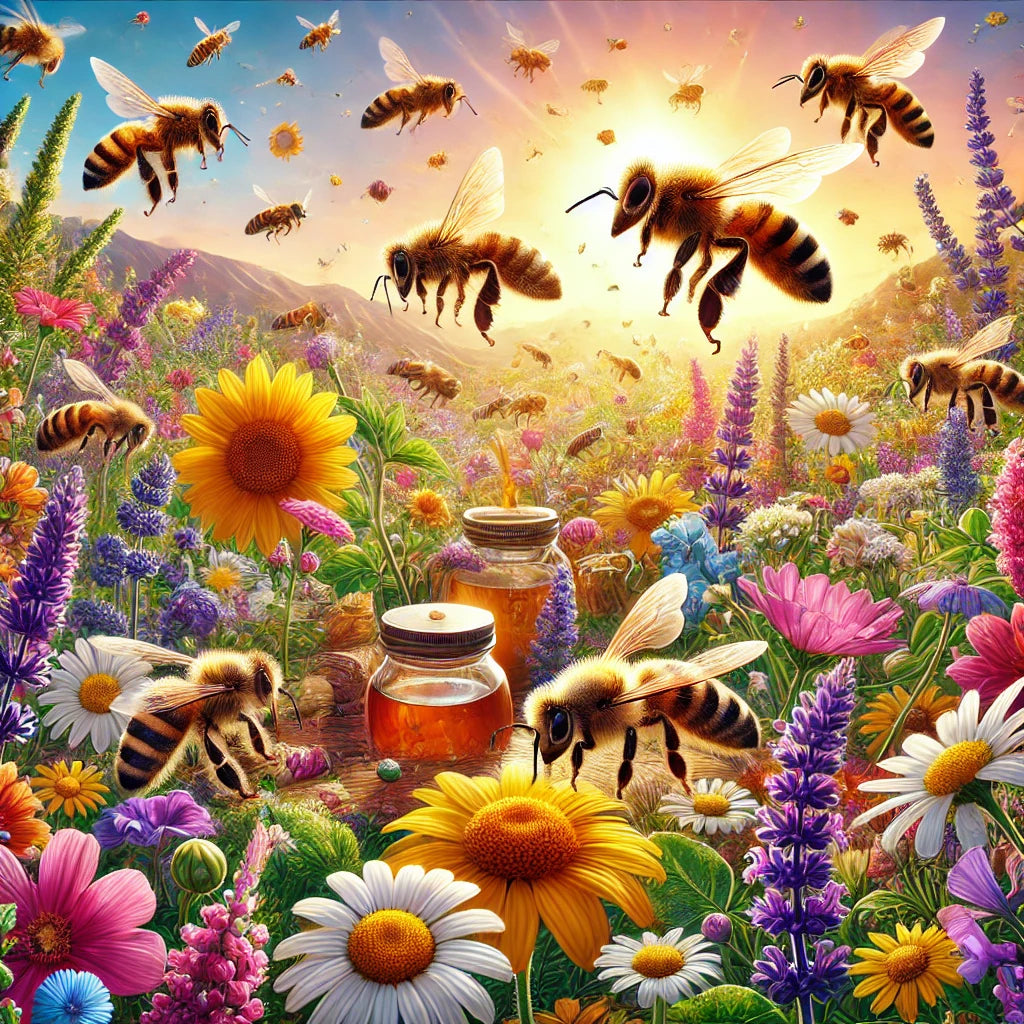The foraging habits of honey bees play a vital role in sustaining their hives. However, not all honey bees forage the same way. By learning about the different foraging habits of various bee species, you can manage your colonies better and ensure their health and productivity. The right foraging tools, like those from Swarm Commander, help maximize these efforts.
Types of Honey Bees and Their Foraging Styles
1. Italian Honey Bees (Apis mellifera ligustica)
- Foraging Behavior: Italian bees are active foragers that collect nectar and pollen from a wide variety of flowers. They prefer stable and warm climates, which makes them less efficient during colder months.
- Strengths: They build up large populations quickly, making them excellent at producing surplus honey.
- Challenges: They are known to rob weaker colonies and require consistent food resources due to their high brood production.
2. Carniolan Honey Bees (Apis mellifera carnica)
- Foraging Behavior: These bees are excellent foragers even in cooler, wet conditions. They start foraging early in the spring when food is scarce.
- Strengths: They adapt well to colder climates, conserve resources during periods of nectar scarcity, and are highly resistant to diseases.
- Challenges: Their rapid population growth increases the risk of swarming, which needs careful management by beekeepers.
3. Caucasian Honey Bees (Apis mellifera caucasica)
- Foraging Behavior: With one of the longest tongues of any honey bee species, they can access nectar from deep flowers that other bees can't reach.
- Strengths: They gather nectar from a wide range of plants and are more adept at collecting nectar from hard-to-reach places.
- Challenges: They build up their population slowly in the spring, which can be a drawback for early honey production.
4. Russian Honey Bees
- Foraging Behavior: Russian bees tend to be selective foragers and only raise brood when nectar is plentiful. They are more conservative in their food usage.
- Strengths: Known for their resistance to varroa mites and other pests, they are effective foragers in a variety of climates.
- Challenges: Their selective foraging can be a downside during periods of low nectar flow.
5. Buckfast Bees
- Foraging Behavior: These bees forage efficiently and produce good honey yields. They are known for being good at surviving in challenging conditions and have high disease resistance.
- Strengths: Buckfast bees are prolific foragers, capable of gathering nectar from a wide variety of sources.
- Challenges: They can become aggressive if the colony is not well-managed.
6. Africanized Honey Bees
- Foraging Behavior: Known for their defensive behavior, Africanized bees are aggressive foragers, gathering nectar quickly and in large quantities.
- Strengths: They are resilient and adaptive to many different climates and forage very efficiently, which leads to rapid colony growth.
- Challenges: Their aggressiveness can be a challenge for beekeepers, especially in populated areas.
For new beekeepers, understanding the life cycle of bees is equally critical for planning and supporting your colony during different foraging stages.
The Role of Weather in Foraging
Foraging bees are highly influenced by weather conditions. Warm, sunny days allow bees to travel farther, while rainy or cold days limit their ability to gather resources. Ensuring your hive is in a location that offers both protection and access to rich foraging grounds can make all the difference. Using resources like bee trap attractants helps direct foraging efforts during favorable conditions.
Plant Selection to Aid Foraging
The availability of the right plants around your hives is crucial for foraging success. Different plant species provide varying levels of nectar and pollen, so diversifying what’s planted around your hives will ensure consistent resources for your bees. This practice not only benefits your bees but also improves pollination in surrounding gardens and agricultural areas, proving the benefits of bees to the environment.
Supporting Bees During Hive Relocation
When foraging resources near the hive are depleted, bee hive relocation may be necessary to bring them closer to new sources of nectar and pollen. Moving a hive is a delicate process but can greatly enhance the foraging capabilities of your colony if done correctly.
Why Honey Bees Are Vital to Agriculture
Honey bees are essential to agriculture. Their foraging habits directly affect crop pollination and, in turn, the entire food production system. Without the natural foraging patterns of honey bees, agriculture would suffer, impacting both crop yields and biodiversity. This is why honey bees are vital to agriculture.
Support Your Colony’s Foraging with Swarm Commander
Understanding the diverse foraging habits of different types of honey bees can help you manage your hives more effectively. With the right strategies, tools, and knowledge, you can enhance your bees’ foraging success, ensuring that your colony stays healthy and productive.
Make sure your bees have everything they need for successful foraging with Swarm Commander. From beetle traps for beehives to essential tools, Swarm Commander helps ensure your bees can thrive in any environment!
Frequently Asked Questions About the Foraging Habits of Different Types of Honey Bees
Q1. What are the most common types of honey bees for foraging?
European honey bees are the most common, known for their strong foraging habits.
Q2. How does weather affect a bee’s foraging ability?
Warm, sunny weather allows bees to forage farther, while cold or rainy days restrict their activity.
Q3. Why are bees essential to agriculture?
Bees are vital pollinators, helping plants reproduce and ensuring healthy crop yields.
Q4. What should I plant to support foraging bees?
Planting a variety of nectar and pollen-rich flowers can improve foraging success.
Q5. Should I move my hive to improve foraging?
If resources become scarce, relocating the hive to a new area with better foraging conditions is beneficial.



